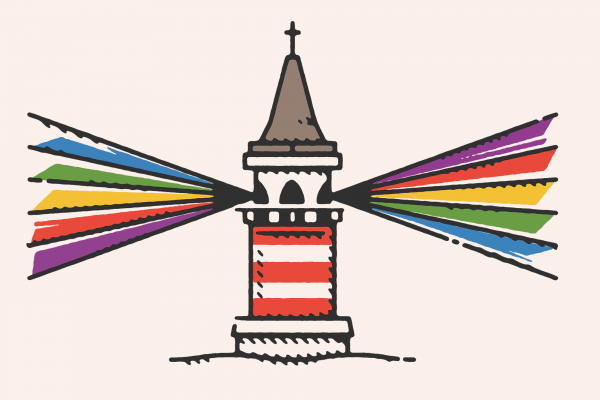THE RELIGIOUS FAITH of LGBTQIA+ people remains, in religion reporting, a puzzlement.
For those of us in the LGBTQIA+ family who were raised in religious—especially Christian—households, our churches have often demanded that we choose between our faith communities and our identities. Until recently, genuine LGBTQIA+ role models of faith were markedly rare. Too often, especially in evangelical communities, so-called role models were promoted because they publicly renounced their sexuality or identity in exchange for “faithful” pursuit of celibacy and gender conformity. Many of us can recount horror stories of religious trauma by those who rejected and condemned our essential selves. It’s not surprising that many of us run from religions dedicated to instilling self-hatred in us.
Yet a survey of LGBT adults in the United States shows they maintain relationships with faith and spirituality at rates similar to all Americans. Twenty percent of LGBT adults in the U.S. (compared to 25 percent of all Americans) say they attend religious services at least once a week, and 47 percent consider themselves religious. (Among all Americans, 41 percent say religion is “very important” in their lives.) If LGBTQIA+ people are engaged with their faith at similar rates to other Americans, why aren’t they centered as positive examples in religion reporting? Last December, Julia Métraux at the Poynter Institute reported on a lack of coverage in religion reporting on LGBTQIA+ communities and on the importance of queer reporters and editors in centering those stories.
Read the Full Article

